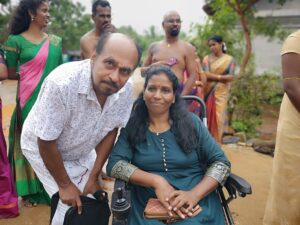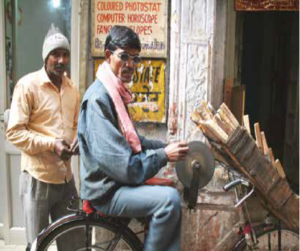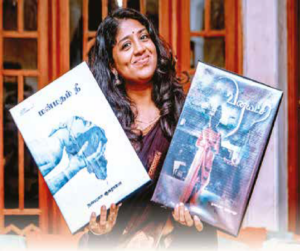Tamils and Their Jewells

It has been common for both men and women to wear body jewellery since ancient times. Our body is broken by nerves. That is why hitting the soles of the feet causes pain in the scalp. That amount is related to the nerve. In our body, there are parts of the nerve that connect the nerves or stimulate the instincts. By wearing jewellery every part of the body is maintained when pressure and chemical changes occur at these points.
Although there are many great jewels, they are made of metals such as gold, silver and copper, which help to reduce body heat. listing each of the benefits of wearing jewellery such as gold, silver, copper and glass anywhere.
Usually, we see women wearing gold ornaments on the upper body and silver ornaments on the lower body. According to scientific principles, silver reflects well with the power of the earth. At the same time gold works well with the body’s energy and light. Such ornaments are considered embodiments of the Goddess Lakshmi, with gold worn above their waist and silver ornaments below it. Therefore, gold is used to decorate the upper parts of the body. Silver is worn on the ankles and on the toes.
Tamil Annai (The Mother Tamil) is praised by ornamenting her with The Five Great Epics of Tamil Literature.
சிரமதில் திகழ்வது சீவக சிந்தாமணி – (Civaka Cintamani, jewellery on forehead)
செவிகளில் மிளிர்வது குண்டலகேசி – (Kundalakesi, stud on ear)
திருவே நின் இடையணி மணிமேகலையாம் – (Manimegalai, girdle on waist)
கரமதில் மின்னுவது வளையாபதியாம் – (Valayapathi, bangle on hand)
கால் தனில் ஒலிப்பது சிலப்பதிகாரம் – (Silappatikaram, anklet on foot)
கண் கண்ட ஐம்பெரும் காவியத்திலகமே
Tamils have a history predating the Sangam period in the Indian subcontinent. They decorated Hindu deities with gold, silver, copper and brass ornaments that continue to be followed today in Hindu temples across the state. The deities (Utsavars and Moolavars) are decorated with jewels and before going out for a procession, temple priests stand the deity in front of a mirror to show them their image. Such temple jewellery is typically inlaid with diamonds and many other kinds of precious gems (navarathnam). However, gold was, and continues to be considered the most precious and auspicious metal of all.
Jewellery for the head
Kreedam, golden crown: Jewel wear by Deities and Kings, studded with precious stones and gems. Nethi chutti or Vagupu chutti or Chutti: Jewel for the forehead.
Rakkadi, used in the backhead: to hold the bunch of lengthy soft hair spun and tied Surya & Chandra Pirai, Sun & Moon shaped ornamental jewel: used to decorate their forehead.
Jadanagam: used to tie the hair band from back side.Pa ttam: tied by both bride and groom during wedding on their forehead.
Kandasaram and Kechaparam: tied on the braid. Thirugupoo: round ornament with screw like back used to wore on the back head in the center. Kunjam: women tie it at the end of braid. It stimulates long hair growth.
Jewellery for the ear
Thodu, ear stud or earrings. Kadukkan: small stud with single stone for men. Olai: large ear studs. Pampadam: gold earring with hallow balls and squares filled with lac. Worn by old ladies with big ear hole. Maattal: chain shaped jewel used to hook in the hair from the earring stud or nose stud. Lolakku: a designer jewel that hung from the ear stud. Kundalam: ear ornament for both men and women. Jimikki: ear stud. Makara kuzhai: fish shaped ear ornament
Jewellery for the nose
Mookuthi: Nose stead (Mukkuthi). Besari: a stud in gold with stone studded Nose stud or ear stead with a hanging design. Bullakku: A designer jewel that hangs from the nose stead or ear stead.
Jewellery for the neck
Muthumaalai or Muthucharam Thaali or Suthuru or Mangalyam: groom ties around bride’s neck during marriage that show the bondage between them. The shape differs according to the caste. Attigai: necklace jewellery worn very close to neck. Aaram or Haram: Necklace. Maalai or Charam: Made of plain gold or pearls & corals. Kaasu Maalai: long chain made of gold coins. Maanga Maalai: long chain designed like mango (Paisley design) studded with stones and gems. Vettrilai Kovai: betel-leaf-shaped pendants on long chain. Kodi Maalai: a chain made in the shape of leaves and plants of soft designs in plain gold.Sangili: Chain made of gold only.
Kaarai: neck ornament Contrakaram: moon shaped ornament for the chest. Listed out in Sangam literature ‘Silapathikaram’. Chavadi: five layers of chain. ” Vilakku mooku “: a chain model ” Godumai vidhai”: a chain model of wheat “Pirandai kattai”: a chain model of pirandai plant “Erattai vadam Malai”: a type of linked two chains
Jewellery for the hands
Valayal or Sarivu: bangles made up of plain gold or gold with stones or gems. Kaikappu: bangles without designs known as Kappu Mothiram or Neli: finger ring. Vangi or Vanki, armband. Nagothu: Naga(snake) shape on vanki. Kanganam (armband) Tholvalai Kappu: used in the shoulder to hold the sari. Nagar or Nagam: A cobra shaped ornament used the upper arms.
Jewellery for the waist
Araijan kodi or Araijanam Oddiyanam: waist belt used to tighten the sari, in the hip. Aranaal: a chain shaped one used along with inner side of sari at hip. Aranjanam or Araijnan Kayiru or Araijnan Kodi: silver or gold chain for tie around the waist of infants or children and men even thick black or red thread will be used.
Arasala (Arasa ilai): pipal or sacred fig leaf like ornament with waist chain made up of gold or silver for babies (female).
Jewellery for feet
Silver ornaments wore below the waist are listed below Metti or Minji or Peeli: grooms place it on the bride’s second finger from toe during wedding Silambu, ring shaped anklet: like hollow pipe that used to contain precious stones, silver balls, pearl or coral beads. The Sangam literature ‘Silapathikaram’ named after silambu.
Sathangai or Salangai: a series of small silver bells and worn in the anklet, used by classical
dancers like Bharathanatyam dancers. Listed out in Sangam literature ‘Silapathikaram’. Kolusu (Anklet): made in silver with varieties of shape and design. Thandai or Patharasam: same as silambu but it is heavy. Kaappu: (Plain anklets)
Bavvatharani R
Nallur
![]()





